How Downside Risk Will Impact Participation in Pathways to Success
ACOs must start weighing if the downside financial risk is worth the reward with the start of Pathways to Success pending.

Source: Getty Images
- Providers queued up eagerly to partake in the Medicare Shared Savings Program when the rewards outweighed the risks, but many accountable care organizations exited the program as the balance of risk shifted to their perceived disadvantage.
Thirty percent of ACOs exited sometime during the first five years of the program, according to a new Health Affairs study from the Duke-Margolis Center for Health Policy and Leavitt Partners. And why the organizations decided to leave the program may spell trouble for recent reforms, research indicated.
Established in 2012, the Medicare Shared Savings Program (MSSP) is the largest ACO program to date. Over 10.4 million beneficiaries in Medicare fee-for-service currently receive care from a provider in one of the 561 participating ACOs.
But after six years, CMS Administrator Seema Verma said the time has come “to put real ‘accountability’ in accountable care organizations.” Following that statement, she announced an overhaul of the MSSP that would not only rename the program to “Pathways to Success” but also push ACOs to take on downside risk sooner.
CMS intended for the MSSP to shift providers to downside risk arrangements. Research shows that risk-based alternative payment models – like Tracks 1+, 2, and 3 of the MSSP – lower costs and improve outcomes.
To date, the majority of MSSP ACOs have failed to live up to program expectations. Eighty-two percent of MSSP ACOs still participate in Track 1, the program’s only non-risk-based track.
And as a result, the program isn’t saving Medicare money. CMS reports that the MSSP has actually increased net spending for Medicare and taxpayers primarily because most ACOs have not taken on risk for increases in costs.
Launching in July 2019, Pathways to Success aims to change all that by requiring most ACOs to assume downside risk in less than two years through its Basic and Enhanced pathways, which phase-in downside risk to the point where providers can earn bonuses under the Quality Payment Program’s Advanced Alternative Payment Model (APM) track.
Transitioning ACOs to downside risk is slated to save Medicare $2.9 billion over the next ten years, CMS says.
However, bearing downside financial risk was the top indicator that an MSSP ACO would exit the program, the Health Affairs study found. Furthermore, researchers reported that ACOs need at least three years to prepare for downside risk.
“This raises the concern that the new MSSP rule — which would allow an ACO only one to three years (less than two years in most cases) before moving to downside risk, substantially less than the current six years—could cause successful ACOs to drop out of the program,” wrote William K. Bleser, research associate at the Duke-Margolis Center for Health Policy and lead author of the study.
RevCycleIntelligence.com spoke with ACO leaders at different points in their financial risk journey to understand how MSSP ACOs are reacting to Pathways to Success and what they are doing to prepare for the new program.
Understanding the Fundamentals of Accountable Care Organizations
5 Care Coordination Strategies for Medicare ACO Success
Is the risk worth the reward?
The Pathways to Success rule represents the most sweeping program changes ACOs have seen since the beginning of the MSSP, says Allison Brennan, MPP, senior vice president of government affairs at the National Association of ACOs (NAACOS).
“We are hearing mixed reactions from ACOs on various parts of the new Pathways structure,” she recently told RevCycleIntelligence.com.
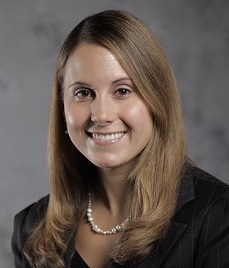
Allison Brennan, MPP, senior vice president of government affairs, NAACOS
Source: NAACOSOne organization having mixed reactions is Millennium Physician Group. The medical group is part of a Track 3 ACO, and group leaders anticipate a smooth transition to Pathways to Success. But the leaders are more skeptical about its Track 1 ACO: Gulf Accountable Care Network.
Todd Gannon, the chief analytics officer at Millennium Physician Group, explained that he is debating whether to move the collaborative ACO to a risk-heavy model considering the shared savings rate dropped from 50 percent under MSSP to 40 percent for upside-only ACOs in Pathways to Success.
“If you're an MSSP Track 1 ACO, then decisions are a lot tougher because you have to weigh going to downside risk and facing lower shared savings payments,” he said. “Our ACO is already performing well in terms of shared savings, but now we're debating with physicians that are not employees with Millennium.”
CMS attempted to prevent current MSSP ACOs from leaving by adding perks to Pathways to Success. For example, the new program includes a regional adjustment for financial benchmarks, and ACOs taking on downside risk in both the Basic and Enhanced pathways are allowed to create beneficiary incentive programs, offer expanded telehealth services, and use the existing three-day skilled nursing facility (SNF) waiver.
Furthermore, “low-revenue” ACOs (e.g., physician-led and rural ACOs) will have more time to assume downside risk.
Despite some notable improvements from the MSSP, Brennan still fears that business decisions like the one facing Gulf Accountable Care Organization could be the death knell for the MSSP.
“If ACOs don't feel comfortable taking on risk, then their option is to exit the program, return to the fee-for-service system, and participate in MIPS,” she explained. “We see many ACOs faring well under MIPS. They can get bonuses by not pursuing risk. ACOs are looking at their alternatives, which are often much safer from a financial standpoint.”
Moreover, data from a recent NAACOS survey found that 20 percent of physician-led ACOs would not qualify for low-revenue ACO flexibilities. Federally qualified health centers and rural health clinics also make up a significant proportion of high-revenue ACOs, the association found.
But putting money on Pathways to Success could benefit providers, said Dale Aggen, director of managed care at Tampa General Hospital.
Tampa General Hospital just started participating in a local collaborative ACO run by Caravan Health that is a Track 1 MSSP participant. The hospital plans to continue with the program despite their lack of risk-based arrangements.
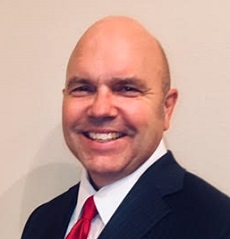
Dale Aggen, director of managed care, Tampa General Hospital
Source: Tampa General Hospital“We anticipate going to an at-risk situation with Caravan Health in the future,” he stated. “It may take an additional two years to do that, but we definitely want to move into that space because the whole environment of healthcare is moving from fee-for-service to value-based arrangements.”
In Tampa, about 50 percent of the population belongs to a Medicare Advantage plan, meaning providers are already at risk for those patients.
“Tampa General and our affiliated providers are not participants of those types of risk arrangements,” Aggen said. “But we need to get the infrastructure together in order to do population health so we can survive in the next decade. The first step was becoming an MSSP ACO so we could develop the infrastructure to go forward with the value-based agreements.”
The risk will be worth the rewards in the long run and a majority of ACOs in the MSSP are gambling on Pathways to Success. But to be successful in a risk-intense environment, the organizations are getting their physicians, data, and infrastructure ready.
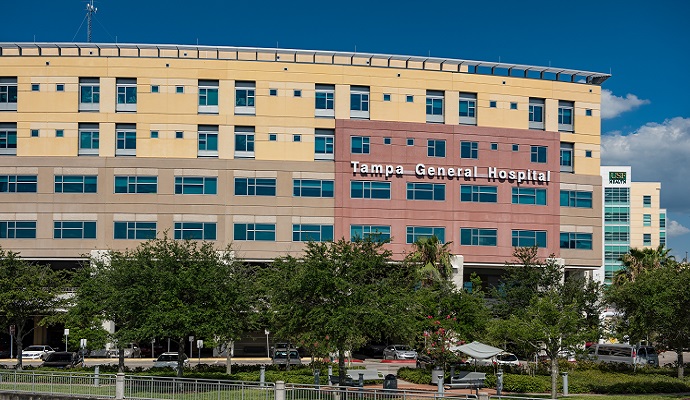
Source: Tampa General Hospital
Exploring Two-Sided Financial Risk in Alternative Payment Models
How Mercy Improved Care Transitions for Risk-Based Care Success
Continuing down Pathways to Success
Taking on downside risk may seem like an impossible – or simply undesirable – task for new ACOs. But organizations are realizing higher shared savings payments and improved care quality by putting their revenue on the line.
Millennium Accountable Care Organization, for example, had the highest earned ACO payout in the US in 2017 after starting as a Track 1 ACO four years prior. Even Tampa General Hospital is starting to realize an increase in population health revenue four months into their preparations for the Pathways to Success.
Gannon and other successful ACO leaders attribute their success to a three-prong strategy that includes engaging physicians, gathering data, and analyzing information to identify care gaps and implement population health management.
Physician engagement
“Our number one strategy is physician engagement,” Gannon stated. “If physicians aren't engaged at the point of care, then no matter what bumpers you put around them, whether it is care management or a specialized program, the ACO will not be successful.”
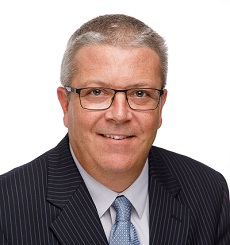
Todd Gannon, chief analytics officer, Millennium Physician Group
Source: Millennium Physician GroupResearchers from Johns Hopkins found in a 2016 case study that physician engagement is the key to ACO success. They reported that limited physician engagement at their own ACO, Johns Hopkins Medicine Alliance for Patients, LLC, acted as a barrier to achieving ACO goals, and conversely, engagement was critical to motivating care transformations necessary to improve quality and lower costs.
To engage physicians, Millennium keeps lines of communication open with affiliated physicians through monthly market-based meetings. The ACO also maintains a physician executive council.
“We meet with a handful of physicians every Wednesday afternoon,” Gannon said regarding the council. “They are the voice of the physicians. They meet with administration and talk about strategy, tactic, implementation, and execution.”
ACOs can also improve physician engagement by developing a culture that values risk-based model success.
ACO leadership and culture were the most commonly cited characteristics of successful ACOs, according to a 2018 report from the Patient-Centered Primary Care Collaborative and the Robert Graham Center. ACOs that improved quality while lowering costs established a culture in which staff, clinicians, and administrators were all accountable for achieving ACO goals.
Engaging physicians and other staff members should start from the top down, Peggy Chou, MD, Senior Medical Director of Performance Excellence at Atrius Health, recently told RevCycleIntelligence.com. Atrius Health participates in a Next Generation ACO that takes full financial responsibility for their assigned beneficiaries.
“We're comfortable with the idea of risk in general, and as our CEO likes to say, that is something that organizations need to have as part of their DNA in order to participate in models like the Next Generation model,” she said.
Data streams and collection
At-risk ACOs need to have a holistic view of their attributed population to manage outcomes and costs effectively. To create the whole picture, the organizations need access to volumes of reliable clinical and financial data.
“It’s really about understanding how to reduce a lot of that redundancy based on the claims data and, also, integrate the clinical data into the system, so we get more of a holistic view of the patient – where they’ve been, what they’ve done, what care’s been provided – to ultimately give them a care pathway for better quality and, also, reduced cost,” Jeffrey Nelson, Millennium Physician Group’s chief information officer recently told RevCycleIntelligence.com.
But accessing all the data necessary for success is a significant challenge for providers in value-based care models, but it can especially jeopardize the success of a risk-based ACO which is coordinating with providers across the care continuum.
“We have so many disparate data sources. We try to capture information from so many different care entities, whether it be hospitals, specialists, skilled nursing facilities, or other primary care facilities,” Nelson said.
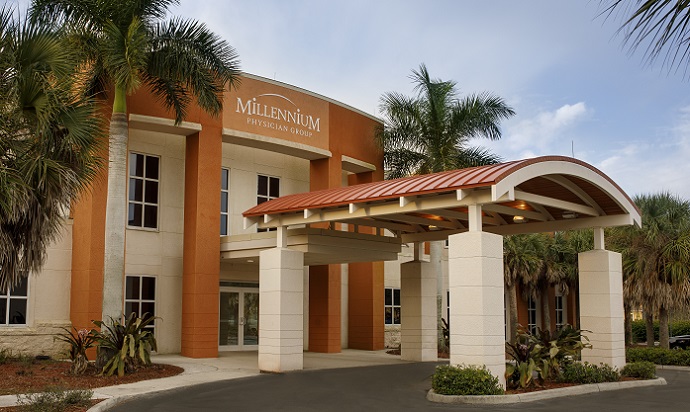
Source: Millennium Physician Group
To bring all the necessary data into one system, Millennium invested in an enterprise data warehouse. The warehouse allows the ACO to look at a single platform to determine if a patient has already had a procedure done, what medications he is on, and other important information that can prevent an expensive, unnecessary event.
Tampa General Hospital has taken a different route. The hospital is preparing its data for risk-based contracts by partnering with an ACO consultant.
“We wanted to go with somebody who had something built,” Aggen explained. “Not exactly off-the-shelf because we have to work with our own providers and our own community. However, Caravan Health had the majority of the items we needed built in. They already implemented Lightbeam, which is the analytics side of care delivery. They also had the contracts already established and all the infrastructure that we needed. So, it was worth the money.”
Analytics drive population health, provider workflows
Data collection is the foundation of an ACO's risk management strategy. However, the information is only as useful as the analytics around it.
ACOs need to be able to analyze large volumes of data to identify care gaps, inform population health management strategies, and monitor progress with benchmarks. Getting those actionable insights to frontline providers is just as important.
The National Business Group on Health (NBGH) has said that mature ACOs should have EHR and population health tools integrated at the patient level and within provider workflows. The organizations should also invest in predictive analytics systems and registries across all their providers and facilities.
The group also stressed that mature ACOs need to be doing the bulk of their own analytics work rather than waiting on payers to review claims data, analyze it, and send reports back to providers. Providers consistently rank lack of access to data from payers as their most significant external challenge with moving to risk, the American Medical Group Association (AMGA) recently reported.
To develop the analytics capabilities of a risk-based ACO, Tampa General Hospital leveraged their partnership with Caravan Health. The ACO consultant gives the hospital data feeds that tell hospital leaders and providers where they are in terms of benchmarks and where they need to go to earn shared savings.
The hospital also receives templates in the EHR system that help providers structure services like wellness visits to ensure they are hitting their checkboxes.
Once ACOs have the ability to analyze their own data and give it to providers, organization leaders should develop tailored population health and utilization management programs to control costs and outcomes.
“Care coordination across all the different points of care is highly important,” Gannon said. “At Millennium, if a patient presents to the emergency room, we have hospitalists in the program who go down to the emergency room and talk with the patient. They help when patients are in that gray area. Should we admit him or not?”
“The ER doctor is more than likely going to admit. But if our hospitalist can take that patient from the ER doctor, evaluate him, and determine that the individual actually needs to see a certain doctor tomorrow morning, then we avoid a potentially unnecessary admission.”
Developing the right population health and utilization management program will depend on the ACO's attributed population. While hospitalists in the ER have been an effective strategy for Millennium, Atrius Health, a Next Generation ACO in Massachusetts, has found success with a small network of high-value skilled nursing facilities and Advocate Health Care's ACO attributes its shared savings earning to walk-in clinics in various Walgreens across Illinois.
Engaging physicians, collecting data, and leveraging analytics tools are key strategies to avoid owing under shared risk ACO contracts. And many ACOs are currently building their capabilities to ensure success in Pathways to Success in the coming months.
But just how many ACOs decide Pathways to Success is not the route for them has yet to be seen. CMS only anticipates 35 ACOs to drop out in the coming years, but research and survey data show that ACOs are still risk-averse.
Moreover, the drastic changes to the MSSP – and other alternative payment models, such as the canceled cardiac bundled payments – may discourage some ACOs from joining Pathways to Success.
Newer ACOs are unlikely to gamble their revenue while CMS is refining their value-based care strategy, especially since successful risk management requires substantial investments in processes, people, and technology.
But for ACOs that have already laid the foundation for risk management success, the shift in the MSSP is just another hurdle to overcome.
"We are always looking for next program whether it is a new education program, access model, or walk-in strategy," Gannon said. "What's the next best way to deliver high quality, low-cost healthcare? It's exhausting, but that's just one of the big takeaways from value-based care."
For Ongoing ACO Shared Savings, Look Outside Inpatient, Primary Care
How Accountable Care Organizations Can Prepare for Downside Risk
